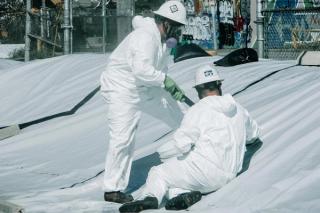
Cultural heritage: Indigenous and cultural heritage values driving sustainable development
by Flavia Kiperman
View post

On Friday, August 26, 2022, the United States Environmental Protection Agency (USEPA) continued to take action on PFAS chemicals (per- and polyfluoroalkyl substances, often referred to as “forever chemicals” due to their persistence in the environment). USEPA released a pre-publication copy of its proposed rule to name two of the best-known of those chemicals, perfluorooctanoic acid (PFOA) and perfluorooctanesulfonic acid (PFOS), to the list of “Superfund” hazardous substances. The move is consistent with USEPA’s “PFAS Strategic Roadmap” announced in October 2021, and with the “PFAS Action Act” or HB 2467, which was passed in the U.S. House of Representatives last summer but bogged down in the U.S. Senate, and comes on the heels of USEPA releasing revised, and dramatically lower, health advisory levels for those two chemicals in June.
If finalized, these designations could have dramatic impacts on many industries and property owners. “Superfund” (or the Comprehensive Environmental Response, Compensation, and Liability Act [CERCLA]) hazardous chemicals have significant reporting requirements associated with any releases into the environment and ties a variety of parties to liability associated with cleanup costs, waste management, and treatment. It also empowers USEPA to require site cleanup by issuing administrative orders and enables government and private parties to recover costs for cleanup from other potentially liable parties. These two effects will have significant impacts across the spectrum of industry and environmental cleanup, including:
As previously noted, this action comes shortly after the USEPA identified lifetime “health advisory levels” for these chemicals that are measured in the parts-per-quadrillion level, below where most laboratory analysis can reliably detect these chemicals; effectively making any detection of PFOA or PFOS at a property a costly and problematic outcome. This will impact facilities that have manufactured the chemical, but also the myriad of industries that have used it in the past, including fuel refining, food-packaging, clothing and textiles, electronics, and many, many others. Many of the largest currently known polluters are U.S. Department of Defense (DOD) military installations, but these chemicals are often found in landfills and municipal wastewater treatment facilities.
Initially, USEPA had anticipated initial rulemaking this spring; however, it was determined by the White House Office of Management and Budget (OMB) to be an “economically significant” rule, which triggered a requirement for a full economic assessment, which has not yet been released, and delayed this summer’s announcement. Such “economically significant” rules are any that are anticipated to cost $100 million or more each year. Further, the release of this pre-publication copy will enable stakeholders to provide comments to USEPA. It should be noted that it is expected that USEPA will consider additional PFAS chemicals for listing later this year.
How SLR Can Help
The impacts of PFAS are truly global and impact every community in the United States. PFAS are used in everything from cosmetics to food packaging and found everywhere from Alaska to Florida and California to Maine – crossing all business sectors and a broad and diverse range of industries. Understanding the history of site activity, as well as how to address identified PFAS contamination, requires a conscientious approach with a thorough understanding of treatments and cost and safety implications. SLR provides a full spectrum of technical environmental services and advice, including:
SLR has experience advising clients on the occurrence, toxicity, and potential environmental liability posed by PFAS releases in the U.S., Canada, and Australia. Our team of experts have performed site characterizations for AFFF training facilities and other potential points of release, evaluated the toxicity of specific chemical species present to develop screening and remediation levels, and planned and performed remediation of PFAS-contaminated media. Working closely with in-house and environmental counsel, SLR has assisted clients to recover costs for remediation and to control long-term liability for confirmed releases. Additionally, SLR has advised clients and counsel on the implications of potential PFAS releases during due diligence for commercial properties.

by Flavia Kiperman

by Jasper Schrijvers , Matthew Hoare

by Clodagh Connolly, Nicola Inge, Andres Schottlaender